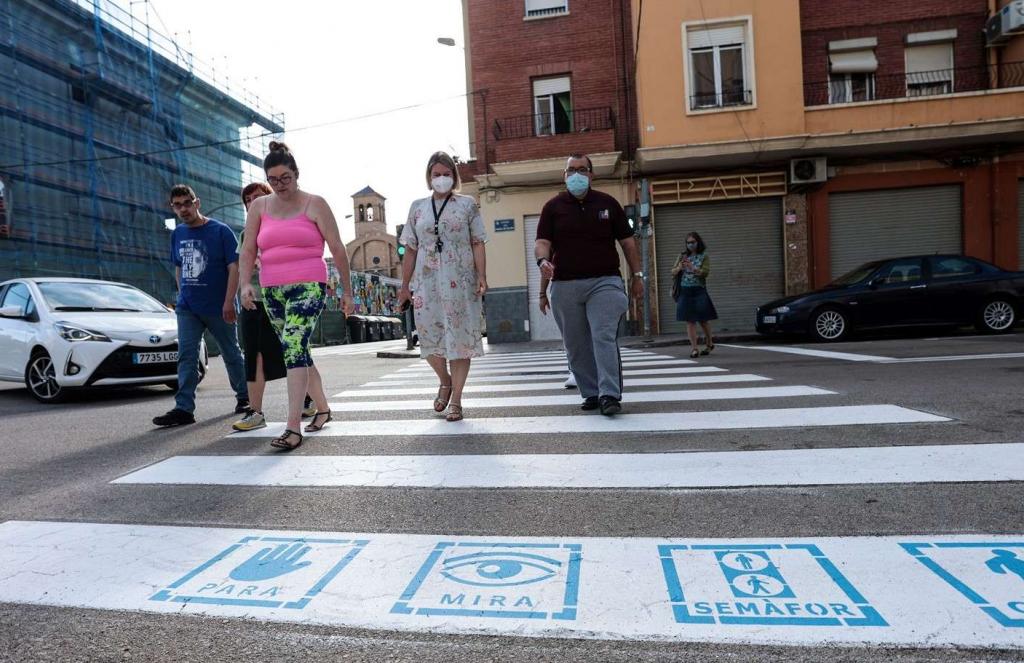Pedestrian crossings are usually more dangerous than other spots of the urban environment for pedestrians. To tackle this issue, the Spanish citiy of Valencia used high and low-tech technologies to secure them.
On the one hand, Valencia City Council focus on improving pedestrian crossing for people with functional diversity, such as people with autism spectrum disorder (ASD). The Department of Social Services has launched a pilot project to paint pictograms on the paint stripes. Those floor signs consist of four blue pictograms indicating the logical movements to safely cross the road, such as: “Stop, look, traffic light, cross”. Those signages are clearly visible on 44 pedestrian crossings around the occupational center for people with ASD in La Torre district.
On the other hand, intelligent pedestrian crossings have been installed in several places in the city to enhance the security of pedestrians both day and night. Made up of 14 luminous horizontal signaling plates, six RLP pilot lights, and two vertical signs, the crossing uses sensors to detect when a pedestrian is about to cross. In this case, the pedestrian crossing lights up in white during the night or red during the daytime to warn drivers and make them stop.


